The state Corporation Roscosmos in early March issued a permit for the manufacture of private tourist spaceship. For many it was a sign that the Federal space Agency ready for close cooperation with private companies. One of them is “Lin Industrial” is a Russian startup that creates ultra-light rocket, resident of innovation center “SKOLKOVO”. About how developments bring closer the time when space will become private, and therefore more accessible, in an interview with the TV company “Zvezda” said the chief integration Manager “Lin Industrial” Nicholas ZIS-wojnarowski.
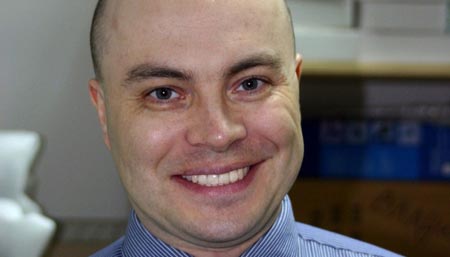
Roscosmos has recently issued the first license for private flying company “Cosmocats”. How do you assess this event for the space industry, what opportunities this opens up for you exactly?
It should be noted that the Russian space Agency has not issued a license for private flights, and agreed on technical specifications for manufacturing private tourist vehicle. All private and public companies in Russia that are engaged in the production of satellites and rockets should get the license. Several companies received, although the case is complex and the procedure is quite bureaucratic. There is a desire this process to be simplified. The relevant draft now in the state Duma.
In addition, legislation, technical specifications for manufacturing of space vehicles must be agreed with the Russian Federal space Agency. In principle, one can argue about the necessity of this rule. It was invented when all the companies were in fact public. I think the law will change, but so far the legislative procedure, and “Kosmocar” claims that he agreed TOR with Roscosmos.
We are excited about this event because it is a sign that Roscosmos is ready to cooperate with the private sector.
How private space companies promising?
Every industry passes in its development several stages. For example, to the computer at first was purely scientific and public interest. The first adding machine was done by scientists at universities. The military quickly realized that the computer can be useful for encryption, for the calculation of the projectile. For a while it was just a military thing. But then as technology development, it became clear that the computer is suitable for the industry. First, in nuclear and space industry, then in the design of cars. At some point, technology has become so affordable that it was possible to build computers in the garage, and now they are already placed in the phone. Thus, information technology has become the civil sector, although, of course, she has remained a military and government segments. And, say, we are very surprised, if we see that the government will indicate, for example, a well-known computer manufacturers, what is the diagonal of the display to make another tablet. This is absurd. But when it passed through the state, all the technical solutions geek. With the space now is about the same. Once it was solely the interest of scientists and the military, the task of great national importance. Then it became clear that large-scale industry also has an interest in it that satellite imagery is useful not only for exploration but also for agriculture.
Now there comes a time when technology has become so accessible and the development is so fast that the already relatively small private companies can undertake the production of satellites and even rockets. And sooner or later the space will happen the same transition as computers. There will remain, of course, assegment, but it will be largely a private industry driven by consumer needs. So this is certainly promising, but today it is especially promising for investors because they have a chance to log on early stage businesses, which in 10 years will be huge.
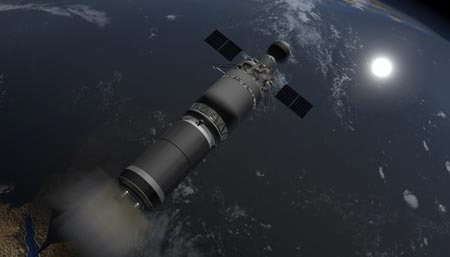
If you compare IT, it took about 50-60 years to do this. As for how many can pass this way the space industry?
The timing is roughly comparable. You can argue about the exact predictions, but what the computer industry had seen in 70-80-s, the space industry started just now.
How fast it can go? Well, let’s see what we have now. It is clear that there is a sufficiently large private companies and satellites, and missiles, including some of them grew out of startups. Orbital, for example, and SpaceX in the USA, “Gazprom space systems”, for example, in Russia. By the way, is a major satellite company has grown from a small team, which participated in the competition for the creation of solar sailing in the 90’s.
With regard to the miniaturization and accessibility of space technology, the West is now in a good University creating cubata (CubeSat), the satellite 10 by 10 by 10 cm, it is something like a term paper. At some Russian universities also made satellites, however, are large enough and long enough, but the transition to small satellites faster and the design is underway. Soon to be launched a satellite made by students of the Samara state aerospace University SamSat-218 – cubesat 3U, that is, with dimensions 10 by 10 by 30 cm.
In addition, there are many private companies involved in small satellites with a mass of about one to two hundred pounds. The most famous such company is Planet Labs. Grown from a small group of adherents, today it is a contender in “unicorns” (a term from the venture capital industry, represents the company, the cost of which exceeds $1 billion).
The idea of Planet Labs simple. The company intends to create a network of dozens of satellites (each about the size of a Shoe box) that will be rotating on a low orbit and regularly photograph the Earth. These cubiti relatively cheap, so you can run them literally in dozens, and even if a dozen will burn up in the atmosphere, you can run another dozen of such. Such a flotilla, or, as they are often called, a pack of satellites (swarm – because one satellite is called the Dove i.e. dove) may withdraw the whole planet, and update the images more than once a year, and once a day. It has great business prospects. For example, a farmer may at satellite images to see how Mature his crops. Now you can too, because there are satellites high resolution. Their quality is good, but efficiency is low. And then any piece of Land will be available with the update a day.
The gas company can almost in real time to see what they have with gas, water rises, whether there is any breakage, foreign objects, cuts. You can monitor the progress of construction of roads and other facilities. This problem was tried to solve, putting the webcam on facilities construction, but, besides the fact that it requires effort from you to broadcast the necessary satellite Internet. And in this case the prices will be comparable with the order of satellite images. In addition, the web camera is easy to bring down.
To demonstrate its capabilities Planet Labs was posted in sharing photos of forest fires, dropped into rivers waste and much more. In General, the range of application of their satellite flocks is quite wide. If you increase the refresh rate of the images, it will be possible in real time track and cork, and the occupancy of Parking lots. The company is considered to be very promising, so promising that there was a time when every month was having a clone.
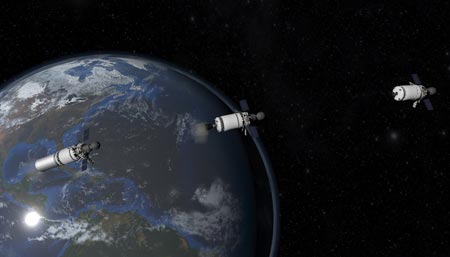
If the idea is so popular, why is it still not implemented?
It is being implemented. Clones Planet Labs will soon earn, and she is already selling satellite images. Planet Labs is a group of nearly a hundred satellites, but it continues to increase.
Another popular trend in small satellites is a global satellite Internet. Several companies involved in this race, including Singapore Yaliny, founded by the Russians, British and American OneWeb project SpaceX and Google.
Of course, to display the number of satellites that need ultra-light rocket. To display the cluster starts them right now – the big rocket. Or along the way, starting with a great companion. It’s pretty cheap, and often do. But I have a huge minus – “a ride” have to wait. Because sometimes you need some orbit, and a few years ago there was a period when the associated output into a sun-synchronous orbit had to wait two years. In addition, if you are flying with someone, the primary customer may not allow you to use your satellite, for example, cylinders with high pressure. They are necessary for system of satellite orientation, but potentially dangerous – you never know, explode and hurt the main satellite. When in orbit will be commercial groups with dozens or hundreds of small satellites, and wait for someone to agree- this is very inconvenient. It now uncomfortable, but then it would just be critical – you lose money, your companion has failed, it needs to be changed, and you wait for a year or two, when you can fly.
Therefore now considered to be a promising direction for the creation of ultra-light missiles, which can withdraw into space vehicles weighing one kilogram. The range of our missiles can withdraw from 10 kg to 180 kg of payload. When compared with traditional rockets, this traditional rockets as the Shuttle bus – Yes, there are cheaper, but you travel with other people and stops. We have this taxi. It is more expensive, but you go where you want, and you don’t need to wait.
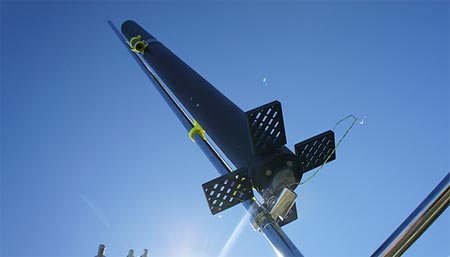
What you have missiles which can also be transferred to orbit satellites?
In early 2020, we plan to launch a missile “Taimyr-1”. After it is successfully tested, the missiles of greater capacity be constructed on a modular principle – to get the rocket out of the building blocks that will greatly reduce costs and streamline the process. About the same modular principle is used in the construction of missiles “Angara”. Accordingly, the range of missiles we will cover the entire segment of small loads from 0 to 180 kg.
Now light the rocket is an American Pegasus XL, which displays 443 kg. And here is a niche o satellites easier 443 kg were not closed.
Before that, we still plan to do meteoraket with altitude of 100 km. firstly, it will be a prototype space rocket, an intermediate stage of the work. The rocket will fly up to 100 km, do not go into orbit, and just “jump” at 100 km, and back. It can be used to measure parameters of the atmosphere for scientific research.
Do you have the first customers on the first rocket?
We have signed an agreement of intent with “Sputniks” company that launched the first Russian private satellite. And with Quazar Space is a Russian startup that plans to make nano-satellites to test space radiation protected electronics. In the process of signing more such contracts.
The question of easy accessibility of the space I wanted to raise such a large reservoir – the question of security. From security start-up security orbit, from personal matters to matters of national security.
Not going to talk about the safety of manned tourist flights. It is best to speak with those engaged. Talk directly about our missiles.
Theoretically, a rocket can be run from anywhere, but almost she has degrees that fall. In Russia there are launch sites, allocated sites, which already fields the fall of the famous. They are closed, and the flight of the rocket is optimized so that the spent stages fall into the designated fields of the fall. This requirement, which have to perform, and accordingly, for convenience, will have to start with one of the existing launch sites – Plesetsk, Kapustin Yar, East.
Now all spins are seriously regulated by the government, and you only theoretically can create the garage into a rocket and launch it into space. In practice, if you start to create a rocket, you will need a lot of things, fuel, hiring of engineers – the rocket until done alone. All this must be done in accordance with the legislation of the Russian Federation.
Triggers even test missiles are agreed with the Federal air transport Agency, which regulates the use of airspace. You must tell them when, where to fly, and they approve or not. In addition, there is licenzirovanie, for example, if you use hazardous substances. In General, the regulation is quite serious.
And finally, there is the licensing of space activities, which, put simply, is that you show the Roscosmos that you have the appropriate equipment, the experts, and that you comply with certain standards, and it allows you to produce spacecraft and license. However, in my view, licensing could be simplified in terms of bureaucratic procedures.
What can be the consequences if PE could not be avoided and, for example, the satellite is a private company crashes into a satellite of another state?
Actually this has already happened in history. In 2009, faced our satellite “Kosmos-2251” and U.S. private communication satellite Iridium 33. Our companion had already ceased to function by that time and, in fact, was space debris, and the Americans knew about the dangerous rapprochement, but he miscalculated, thought the risk of collision is small and did not shy away. Therefore, the legal consequences were not.
In Russia there is a System of control of outer space, a similar system exists in other countries, active satellites and space debris is tracked, satellites and try to make it so that collisions did not occur.
Formally, under international law a state is responsible for damage, which can cause his spacecraft. That is, if the satellite is a private company crashes into a satellite of another state, the damage pays the government of the country, and then in court the state will seek compensation from the company. But no one is interested, so the legislation is constructed in such a way that initially, the traders do not do space vehicles that someone has caused the damage.
As for space debris, the problem exists, but recent trends are to provide a device of satellites deorbit. There are interesting developments, but so far it has not been standardized, has become an international practice. The last time people seriously thought about this problem. While geostationary satellites to derive the so-called graveyard orbits, and many satellites in low orbits themselves go and burn up in the atmosphere fairly quickly.
So is there the problem of space debris?
This is a real problem, but need some time for the international community to come up with technical solutions and negotiate. Of interesting developments on this subject can mention the Russian project “the beacon” Alexander Saenko from MAMI. In July he is going to launch a satellite with a large solar reflector light, made of thin foil. Before finishing, the satellite will release the reflector, which is due to the large size would hinder him. The satellite will quickly descend from orbit and burn up in the atmosphere.
But, of course, the problem with the space debris, which is flying, not yet resolved, although it is trying to solve. Some companies even think over how to revive the satellites that are out of order, that is, to fill them up again, change some blocks. Any ideas on how to bring satellites out of orbit. That is, to a particularly dangerous companion hangs another small satellite whose sole purpose is to slow down. Sooner or later the problem will be solved, because everyone already understands that a lot of debris and if you do not control it, then at some point we will not be able to fly into space, all around the Earth would be littered, and any flight is the collision with a particle, which will make a hole in the rocket.
When in orbit will have a lot of private satellites, they can solve some very individual task, for example, to follow someone. The issue of security of personal life, he rises in the draft?
First, the topic of privacy is tied not only to the satellites. After all, there are drones. And today, to shoot someone with a drone is much easier than satellite. But satellites have the advantage of the drone can be shot down. With the satellite more difficult, so it will not knock.
Moreover, in today’s world the threat to privacy comes from everywhere. All DVRs, all post entries. Few people working in the video to cover the rooms. About the fact that almost all of our mobile devices transmit a location, can not speak. Many modern technologies violate privacy. What to do with it? There are people who believe that it should be tough legislation to restrict. There are people who believe that need to hide, for example, use the instant messengers with encryption. And there are those who believe that people in the future just change habits, get used to the openness and privacy will be not in fashion. It is rather a philosophical question – it is not to producers of technology.
Your site shows the number of launches of small satellites and their prognosis. Since 2012 the number of starts has increased significantly. First, what is the reason, and secondly, based on what forecast?
It is a forecast of the company O2Consulting. There are similar graphs from research firm SpaceWorks, where it is expected that by 2020 about 500 launches of small satellites. Ten years ago I saw the forecast SpaceWorks, which is predicted for 2020 launch about 120 satellites to small. But that threshold was to be held in 2014. This is due to the launches of PlanetLabs. Boom in small satellites has begun.
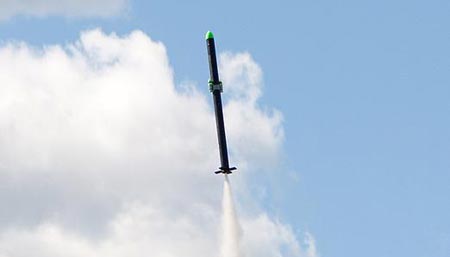
It’s kind of a revolution?
Yes, and was caused by the fact that at some point, the engineers looked at PlanetLabs satellites and on their smartphones, and realized that the power of the smartphone and its electronics is much more than a modern satellite – better camera, a more powerful computer. They came up with the idea: “Why not send the phone into space?” Sent and tested: indeed, it works. Electronics was very tenacious. After that it was launched a few satellites that are in some way the components used smartphones and worked fine. Then it became clear that the process of creation of the satellite can be cheaper, and even a small satellite can perform a variety of tasks.
In recent times electronics and the creation of a capacious and tiny batteries are moving by leaps and bounds, and all these developments can be applied in space industry, due to which such miniaturization.
Interviewed By Michael Levers.
Photo: “Lin Industrial”







